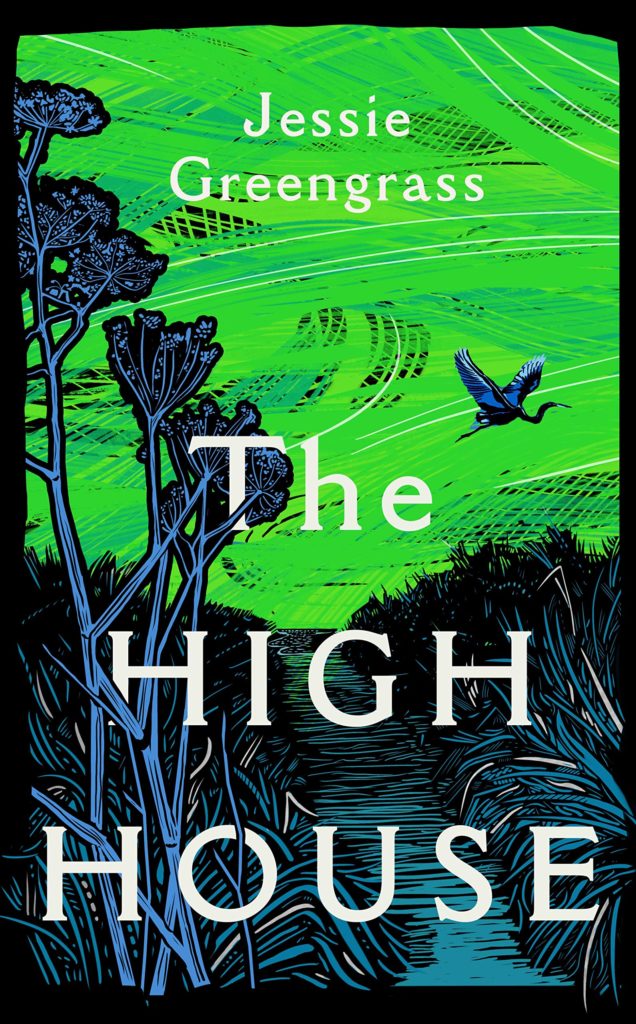Published by Swift Press, Jessie Greengrass’s ‘The High House’ confronts our age-old preoccupation with imminent end of days, writes Katharine Norbury.

Throughout my life, and perhaps throughout every life, there has been a background thrum of anxiety as each generation fantasises about the exact way in which the world might end. From Michelangelo’s Last Judgement, where the artist’s flayed skin is exhibited dangling by a knife-wielding St. Bartholomew above a bottomless pit, through T. S. Eliot’s ‘not with a bang but a whimper’; from Kennedy and Miller’s Mad Max post-fossil fuel anarchy to Cormac McCarthy’s post-unspecified extinction event in The Road. We rarely attempt to prepare for, yet regularly obsess about this event while pushing it to the periphery of our imaginations as something too incongruous and ephemeral to act upon. When I was at school we were shown a 32-year-old film called Duck and Cover – not as part of a history lesson but for practical information purposes – which instructed us on what to do in the event of a nuclear attack. Perhaps this had been triggered by Reagan’s 1984 ‘Star Wars program’ (can anyone else remember Katharine Hamnett’s 58% Don’t Want Pershing T-shirt?) or perhaps it was part of the syllabus. In recent months we have encountered another variation on the apocalypse. It is almost exactly one year ago that I observed three women rolling about the aisle of a South London supermarket as they fought over a last bag of nachos, while others of us stole out at early light like hunter gatherers to track down toilet rolls or pasta, when the chances of infection felt lowest. We have all been stopped in the ordinary cycles of life, both from visiting new babies and from mourning our inadequately celebrated dead.
Jessie Greengrass steps into this archetypal, anxious arena with The High House and makes it her own. Against a familiar backdrop of shifting climate and rising seas, Greengrass returns us with fresh eyes to the oldest of recorded narratives: to the Epic of Gilgamesh and to Utnapishtim, who was granted immortality because he saved all land dwelling creatures in a ship called The Preserver of Life. This story may in turn belong to another flood myth, that of Atra-Hasis (18th Century BCE). The Babylonian/Mesopotamian tale is probably most familiar to those of us born into Abrahamic traditions as the story of Noah’s ark. And now, in Jessie Greengrass’s assured folk fable, there comes Francesca: a character who labours at the edge of our vision, who no-one quite seems to either know or to like. She secures the High House against an imminent end of days, a house that is situated just higher than the coming flood, for her infant son Pauly to live with a group of companions, hand-picked by Francesca to serve as his family, as his teachers, and his friends.
The intimate details of family life are recorded exquisitely by Greengrass: the relationship between Pauly and his half-sister Caro, and with student-turned-housekeeper Sal; the tension between the two women balanced by the steadying but waning influence of Sal’s grandfather have been forged in compassionate observation. Time, weather, and the twin disciplines of love and duty define the shocked lives of Greengrass’s characters. Francesca has provided for the new household, but when her heaped supplies run out, how will they continue? It is this which is perhaps the most interesting question at the heart of The High House. The 36,000-year-old cave paintings at Altamira in Spain are a prayer to the animals and birds which sustained the Upper Palaeolithic artist who made them. Yet the inhabitants of the High House keep no livestock beyond chickens, nor do they seek to obtain any – no cheese, no yoghurt, no milk, no wool, no transport, no meat, no rotating pasture, no dogs for hunting and companionship, no cats for keeping down rodents. Domestic animals are wholly missing, though they occasionally float by, drowned, on the flood, and the protagonists make no attempt to find them. Yet the wild birds that survive are a glory to Paul, and a veiled Christian subtext tacks throughout the narrative, from the lived experience of human sacrifice, the physical redemption of the survivors, to the vehicle of C. S. Lewis’s Narnia Chronicles which accompany the survivors to the High House. Francesca’s name may be a reference to the man who wrote Laudato Si’ – subtitled ‘On Care for Our Common Home’, or perhaps to his namesake – the one who talked to the animals.
A compassionate, beautifully realised narrative of love and sacrifice, The High House asks as many questions of its readers as those for which it provides the answers. Should we all be returned to a place before the advent of agriculture? Was it the yoking of oxen that provoked the real ‘Fall’? Or are we being asked to voluntarily step to one side, live out our days with grace and humility, then let the wild things inherit the earth?
*
‘The High House’ is out now and available here, priced £14.99.
Katharine Norbury is the editor of ‘Women on Nature: 100 Voices on Place, Landscape and the Natural World’, which is published next month by Unbound. Pre-order a copy here.